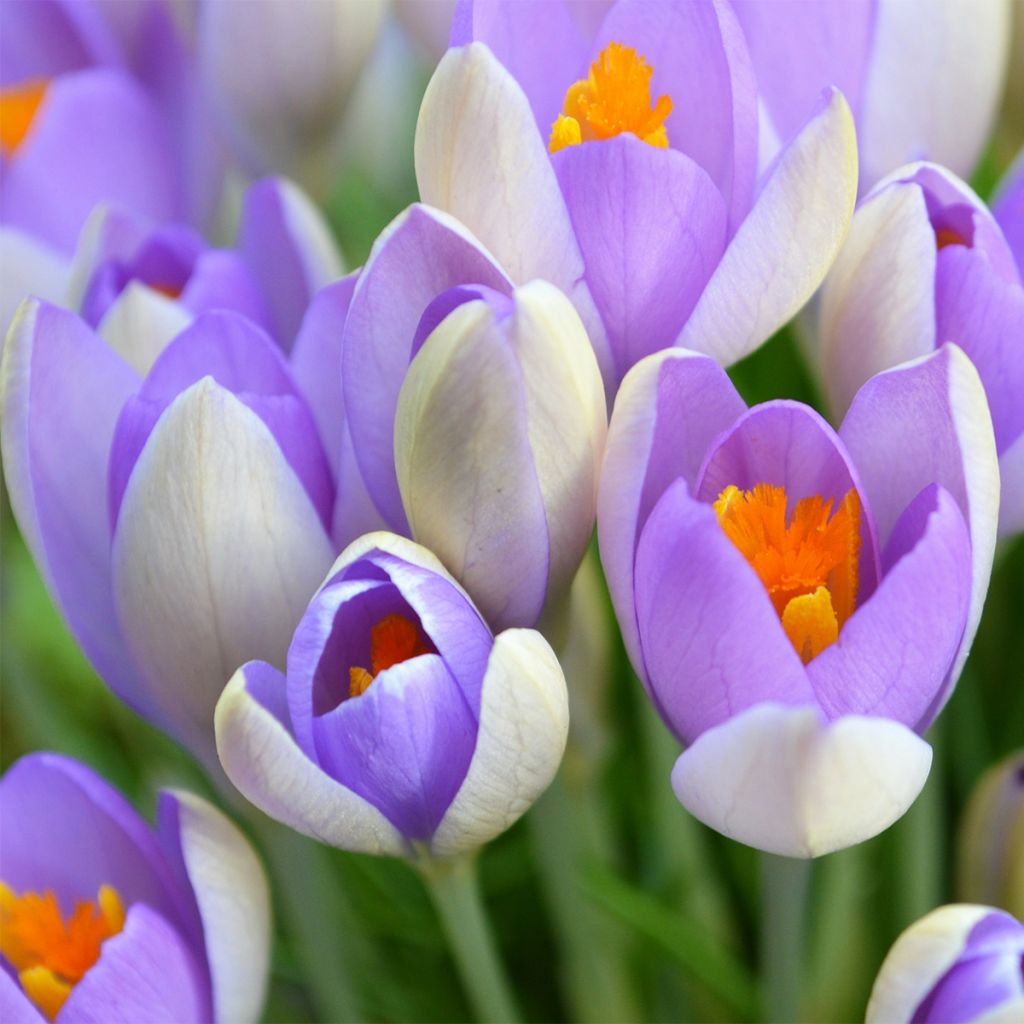

Crocus Mammouth Whale Shark
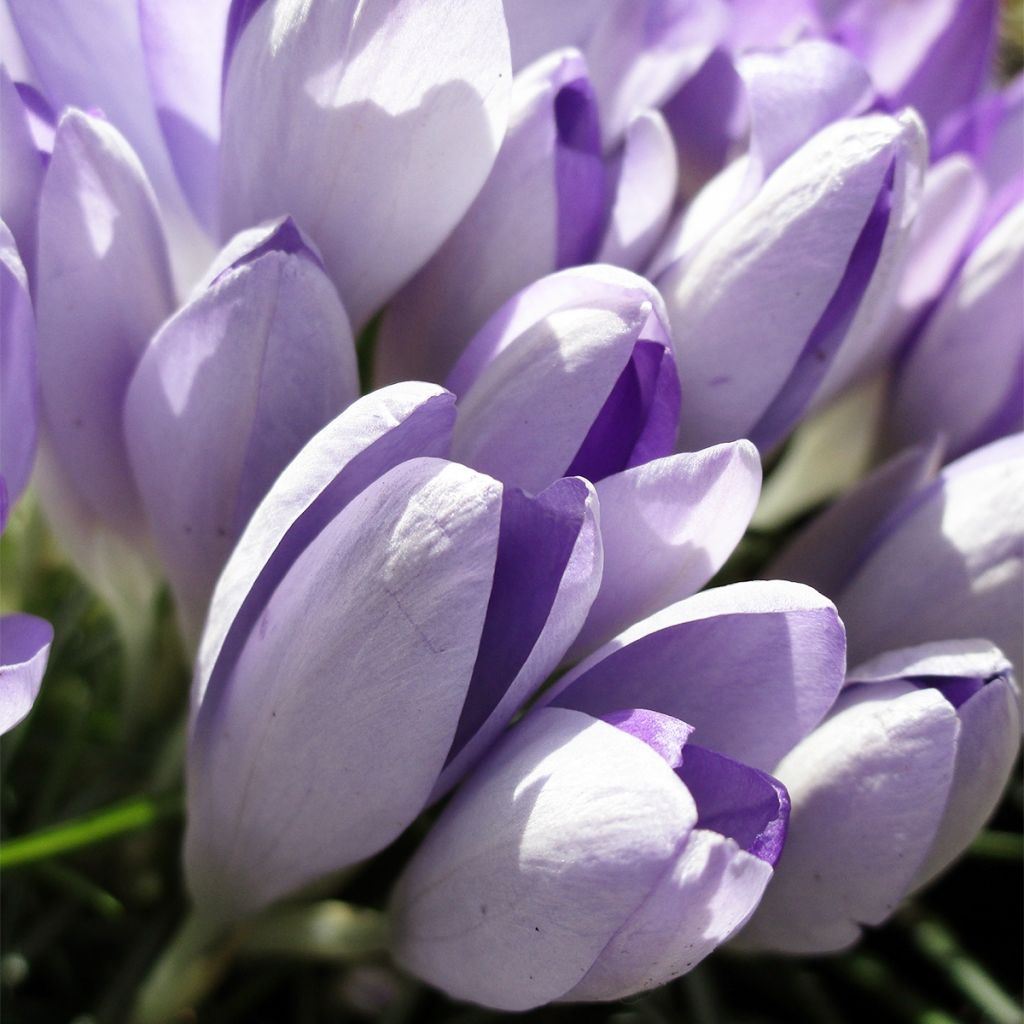

Crocus Mammouth Whale Shark
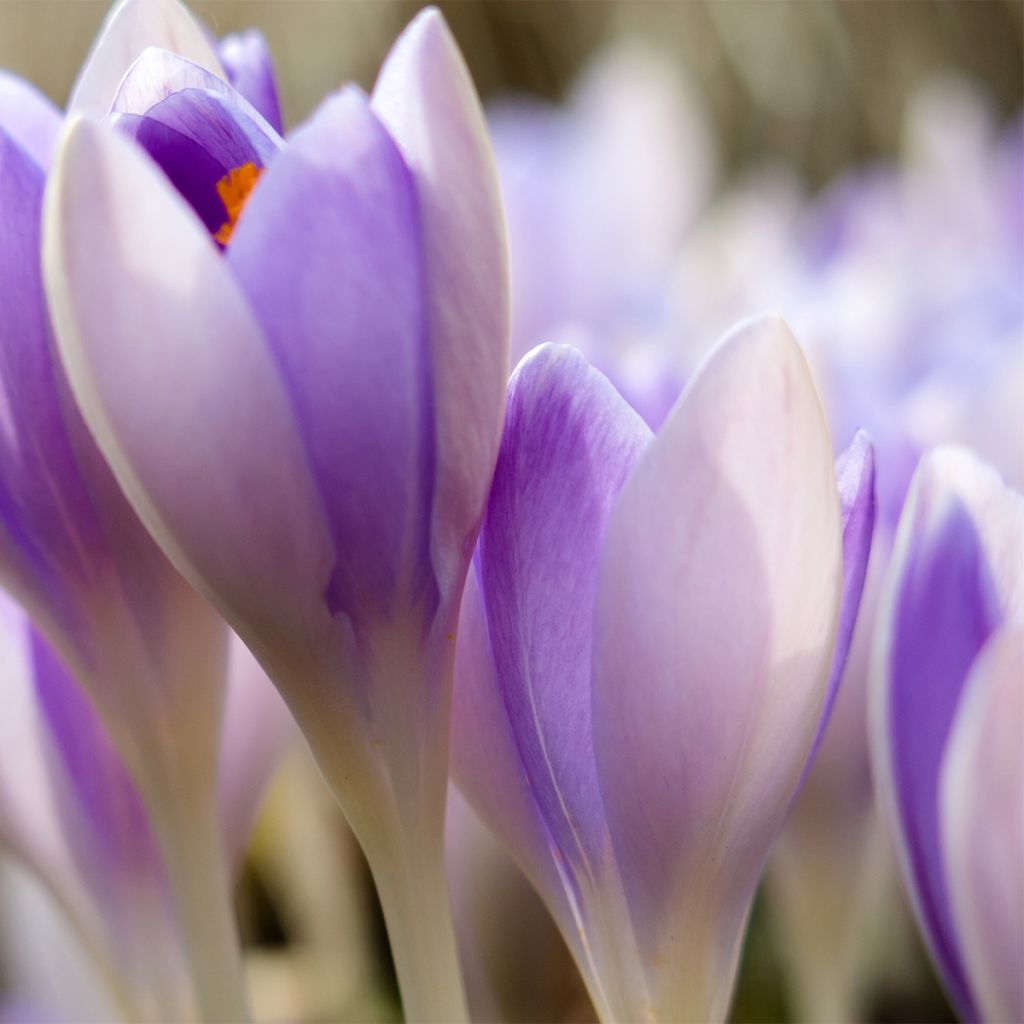

Crocus Mammouth Whale Shark
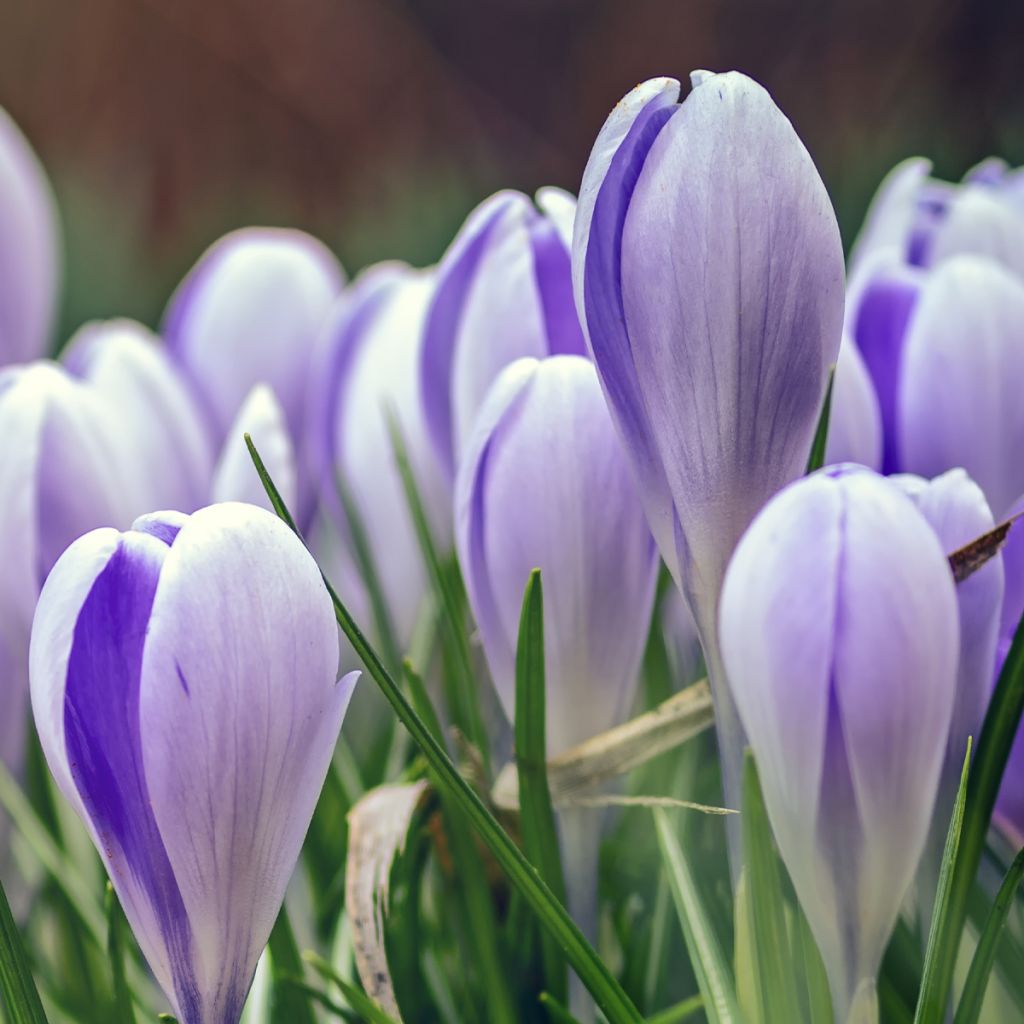

Crocus Mammouth Whale Shark
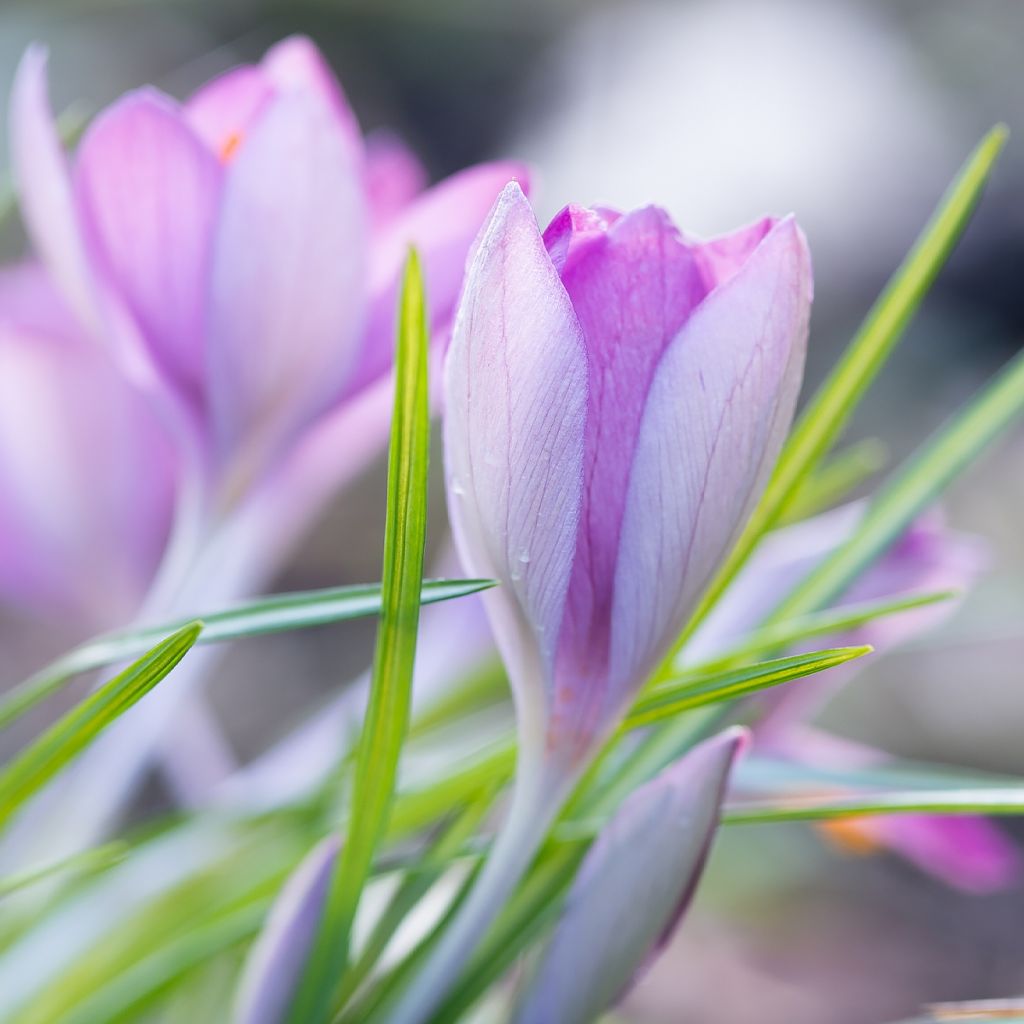

Crocus Mammouth Whale Shark
Crocus vernus Whale Shark
Crocus x vernus Whale Shark
Spring crocus, Dutch crocus
Beautiful crocuses in size and colour
Laurence D., 18/05/2023
This plant carries a 6 months recovery warranty
More information
We guarantee the quality of our plants for a full growing cycle, and will replace at our expense any plant that fails to recover under normal climatic and planting conditions.
From €5.90 for pickup delivery and €6.90 for home delivery
Express home delivery from €8.90.

Does this plant fit my garden?
Set up your Plantfit profile →
Description
Crocus 'Whale Shark' is a small bulbous plant that is easy to grow and highly ornamental, heralding the return of spring with its beautiful bicolour flowering, in mauve and white. Vigorous and reliable, this crocus quickly naturalises in lawns and rockeries, in the sun.
Crocus 'Whale Shark' is a recent variety, derived from Crocus vernus, the spring crocus. It is a perennial plant with a corm from the Iridaceae family. Like many spring-flowering horticultural hybrids, this variety produces large flowers. The species itself is native to central and eastern Europe, and is extremely hardy as a result. 'Whale Shark' forms a clump of dark green linear leaves with a white-silver median, from which solitary flowers emerge 10 to 15cm (4 to 6in) above the ground in March-April, lasting for about 3 weeks. These cup-shaped flowers are composed of 3 mauve petals surrounded by almost white sepals. They close at night and in bad weather, only to fully open under the sun, revealing a heart adorned with beautiful yellow-orange stamens. The foliage dries up and disappears in late spring or early summer. The bulb then enters summer dormancy.
Crocuses are undisputed stars of the garden, as they are the first heralds of spring. 'Whale Shark' is a beautiful mammoth variety that blooms after Crocus chrysanthus, for example. When planted in large groups, it forms magnificent carpets of colour in lawns, along pathways, and rockeries. It also grows very well in pots or containers, to liven up balconies. Crocuses prefer to stay in place where they easily naturalise and thrive year after year. Do not remove the leaves before they have yellowed and withered. The leaves help the bulb replenish its reserves for future flowering.
There are also autumn-flowering crocuses, such as saffron or colchicums, which are equally charming and easy to grow. Sternbergia lutea, on the other hand, is a small bulbous plant that resembles a golden yellow crocus, but blooms in September, along with colchicums.
Report an error about the product description
Crocus vernus Whale Shark in pictures
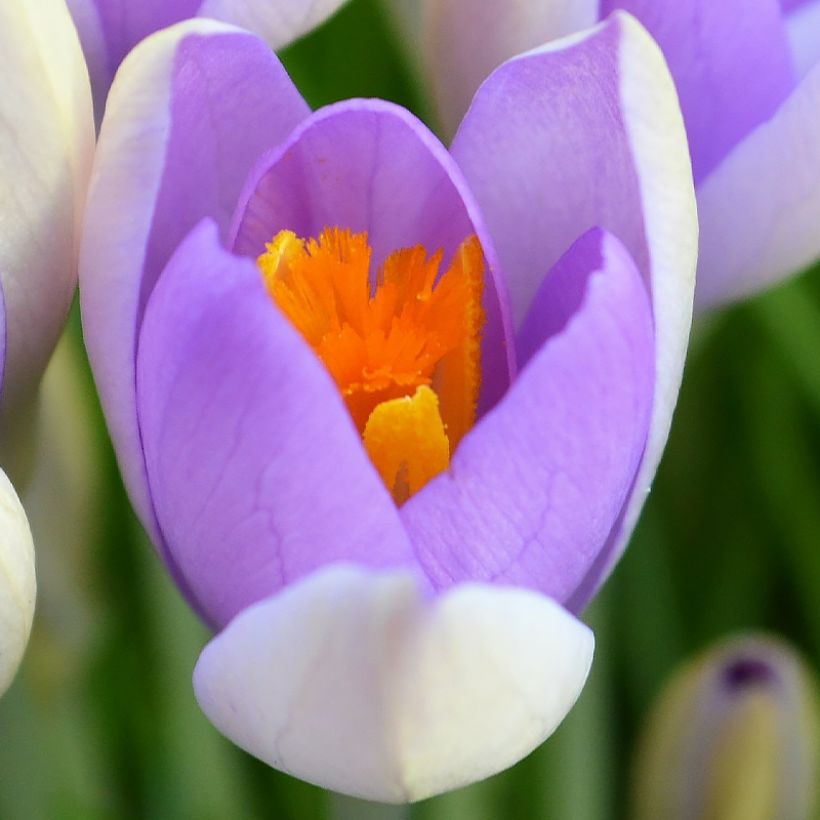

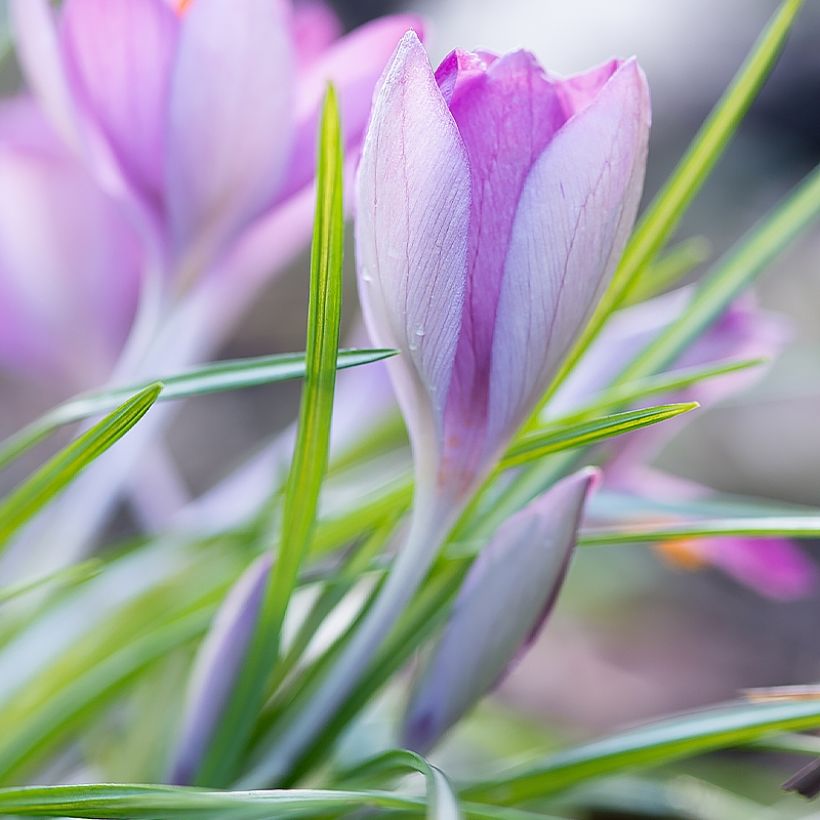

Plant habit
Flowering
Foliage
Botanical data
Crocus
x vernus
Whale Shark
Iridaceae
Spring crocus, Dutch crocus
Cultivar or hybrid
Planting and care
Crocus 'Whale Shark' is easy to grow in most of our regions (except in regions that are too dry in summer). Place preferably in the sun. You can also put it in partial shade. Plant the bulbs from September to December, frost-free, in any light, moist but well-drained soil. It withstands summer drought, during which the bulb rests underground. The bulbs should be placed with the tip facing upwards, at a depth of 5cm (2in) and spaced 5cm (2in) apart, or in groups of three every 15 to 20cm (6 to 8in). In a pot or container, plant the bulbs close together. After planting, do not disturb the bulbs. Once the flowering is over, cut off the faded flowers and leave the bulbs in the ground, where they will form increasingly floriferous clumps. Do not cut the foliage before it turns yellow. If you want to remove the bulbs, wait until the foliage has dried.
Planting period
Intended location
Care
-
, onOrder confirmed
Reply from on Promesse de fleurs
Haven't found what you were looking for?
Hardiness is the lowest winter temperature a plant can endure without suffering serious damage or even dying. However, hardiness is affected by location (a sheltered area, such as a patio), protection (winter cover) and soil type (hardiness is improved by well-drained soil).

Photo Sharing Terms & Conditions
In order to encourage gardeners to interact and share their experiences, Promesse de fleurs offers various media enabling content to be uploaded onto its Site - in particular via the ‘Photo sharing’ module.
The User agrees to refrain from:
- Posting any content that is illegal, prejudicial, insulting, racist, inciteful to hatred, revisionist, contrary to public decency, that infringes on privacy or on the privacy rights of third parties, in particular the publicity rights of persons and goods, intellectual property rights, or the right to privacy.
- Submitting content on behalf of a third party;
- Impersonate the identity of a third party and/or publish any personal information about a third party;
In general, the User undertakes to refrain from any unethical behaviour.
All Content (in particular text, comments, files, images, photos, videos, creative works, etc.), which may be subject to property or intellectual property rights, image or other private rights, shall remain the property of the User, subject to the limited rights granted by the terms of the licence granted by Promesse de fleurs as stated below. Users are at liberty to publish or not to publish such Content on the Site, notably via the ‘Photo Sharing’ facility, and accept that this Content shall be made public and freely accessible, notably on the Internet.
Users further acknowledge, undertake to have ,and guarantee that they hold all necessary rights and permissions to publish such material on the Site, in particular with regard to the legislation in force pertaining to any privacy, property, intellectual property, image, or contractual rights, or rights of any other nature. By publishing such Content on the Site, Users acknowledge accepting full liability as publishers of the Content within the meaning of the law, and grant Promesse de fleurs, free of charge, an inclusive, worldwide licence for the said Content for the entire duration of its publication, including all reproduction, representation, up/downloading, displaying, performing, transmission, and storage rights.
Users also grant permission for their name to be linked to the Content and accept that this link may not always be made available.
By engaging in posting material, Users consent to their Content becoming automatically accessible on the Internet, in particular on other sites and/or blogs and/or web pages of the Promesse de fleurs site, including in particular social pages and the Promesse de fleurs catalogue.
Users may secure the removal of entrusted content free of charge by issuing a simple request via our contact form.
The flowering period indicated on our website applies to countries and regions located in USDA zone 8 (France, the United Kingdom, Ireland, the Netherlands, etc.)
It will vary according to where you live:
- In zones 9 to 10 (Italy, Spain, Greece, etc.), flowering will occur about 2 to 4 weeks earlier.
- In zones 6 to 7 (Germany, Poland, Slovenia, and lower mountainous regions), flowering will be delayed by 2 to 3 weeks.
- In zone 5 (Central Europe, Scandinavia), blooming will be delayed by 3 to 5 weeks.
In temperate climates, pruning of spring-flowering shrubs (forsythia, spireas, etc.) should be done just after flowering.
Pruning of summer-flowering shrubs (Indian Lilac, Perovskia, etc.) can be done in winter or spring.
In cold regions as well as with frost-sensitive plants, avoid pruning too early when severe frosts may still occur.
The planting period indicated on our website applies to countries and regions located in USDA zone 8 (France, United Kingdom, Ireland, Netherlands).
It will vary according to where you live:
- In Mediterranean zones (Marseille, Madrid, Milan, etc.), autumn and winter are the best planting periods.
- In continental zones (Strasbourg, Munich, Vienna, etc.), delay planting by 2 to 3 weeks in spring and bring it forward by 2 to 4 weeks in autumn.
- In mountainous regions (the Alps, Pyrenees, Carpathians, etc.), it is best to plant in late spring (May-June) or late summer (August-September).
The harvesting period indicated on our website applies to countries and regions in USDA zone 8 (France, England, Ireland, the Netherlands).
In colder areas (Scandinavia, Poland, Austria...) fruit and vegetable harvests are likely to be delayed by 3-4 weeks.
In warmer areas (Italy, Spain, Greece, etc.), harvesting will probably take place earlier, depending on weather conditions.
The sowing periods indicated on our website apply to countries and regions within USDA Zone 8 (France, UK, Ireland, Netherlands).
In colder areas (Scandinavia, Poland, Austria...), delay any outdoor sowing by 3-4 weeks, or sow under glass.
In warmer climes (Italy, Spain, Greece, etc.), bring outdoor sowing forward by a few weeks.


































